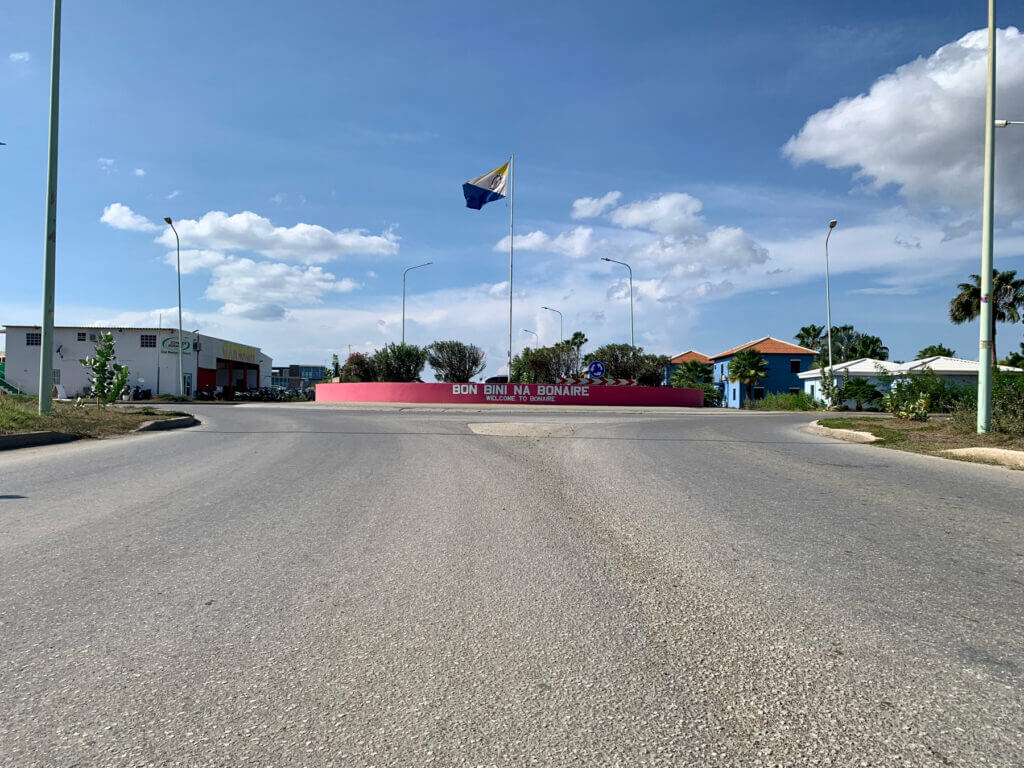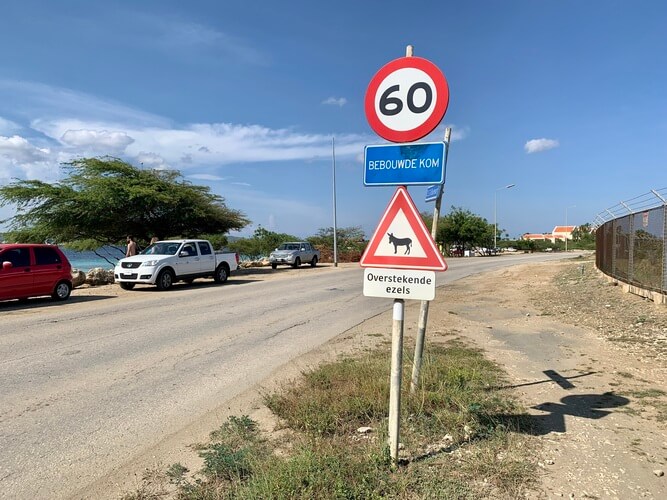Understanding traffic rules in Bonaire is crucial for anyone planning to drive or explore the island. Whether you're a tourist or a resident, familiarizing yourself with local regulations ensures safety and compliance with the law. This article delves into the essential aspects of Bonaire's traffic rules, offering valuable insights for drivers and pedestrians alike.
Bonaire, known for its stunning landscapes and vibrant culture, attracts thousands of visitors each year. However, navigating its roads requires an understanding of the local traffic regulations. This guide provides a detailed overview of Bonaire's traffic laws, helping you stay informed and prepared.
By the end of this article, you'll have a clear understanding of Bonaire's traffic rules, including speed limits, road signs, and penalties for violations. Let's dive in and explore what you need to know to enjoy a safe and hassle-free experience on the roads of Bonaire.
Read also:How Old Are The Outdaughtered Quints Now A Deep Dive Into Their Lives And Growth
Table of Contents
- Introduction to Traffic Rules in Bonaire
- Speed Limits and Enforcement
- Understanding Road Signs in Bonaire
- Driving Licenses and Permits
- Alcohol and Driving Regulations
- Penalties for Traffic Violations
- Safety Tips for Drivers and Pedestrians
- Rental Cars and Insurance
- Public Transportation Options
- Frequently Asked Questions
- Conclusion
Introduction to Traffic Rules in Bonaire
When visiting Bonaire, understanding the local traffic rules is essential for a smooth and safe journey. The island adheres to a set of regulations designed to ensure the safety of all road users. These rules cover everything from speed limits to parking restrictions, making it important for both residents and visitors to familiarize themselves with them.
One of the key aspects of Bonaire's traffic rules is the emphasis on safety. Drivers are expected to adhere to specific guidelines, such as wearing seat belts and using appropriate child restraints. Additionally, the use of mobile phones while driving is strictly regulated to minimize distractions and enhance road safety.
In this section, we'll explore the fundamental principles of Bonaire's traffic rules, highlighting the importance of compliance and the consequences of violations. By understanding these rules, you can contribute to a safer driving environment for everyone on the island.
Speed Limits and Enforcement
Understanding Speed Limits in Bonaire
Bonaire implements speed limits to ensure the safety of all road users. The speed limits vary depending on the type of road and location. In urban areas, the typical speed limit is 30 km/h, while on highways, it increases to 50 km/h. These limits are clearly marked with road signs, and drivers are expected to adhere to them at all times.
Enforcement of Speed Limits
The enforcement of speed limits in Bonaire is taken seriously, with traffic officers regularly patrolling roads to monitor compliance. Speed checks are conducted using radar guns and automated systems, ensuring that drivers adhere to the posted limits. Violations of speed limits can result in fines and penalties, emphasizing the importance of following these regulations.
Understanding Road Signs in Bonaire
Road signs in Bonaire play a crucial role in guiding drivers and ensuring safety. These signs provide important information about speed limits, road conditions, and potential hazards. Familiarizing yourself with these signs is essential for navigating the island's roads effectively.
Read also:Best Knock Knock Jokes To Brighten Your Day
- Warning signs: Indicate potential hazards such as sharp curves or pedestrian crossings.
- Mandatory signs: Require drivers to take specific actions, such as stopping at intersections or yielding to other vehicles.
- Information signs: Provide details about destinations, distances, and services available along the road.
By understanding and obeying these road signs, drivers can ensure a safer and more efficient journey across Bonaire.
Driving Licenses and Permits
To drive in Bonaire, you must possess a valid driving license. International visitors can use their home country's driver's license, provided it is recognized by Bonaire. Alternatively, an International Driving Permit (IDP) can be used as supplementary documentation to ensure compliance with local regulations.
Residents of Bonaire are required to obtain a local driver's license, which can be obtained by passing the necessary tests and fulfilling the required documentation. This ensures that all drivers on the island meet the standards set by Bonaire's traffic authorities.
Alcohol and Driving Regulations
Bonaire has strict regulations regarding alcohol consumption and driving. The legal blood alcohol concentration (BAC) limit for drivers is 0.05%, and exceeding this limit can result in severe penalties. Law enforcement officers conduct random breath tests to ensure compliance with these regulations.
Drivers are advised to avoid alcohol consumption before operating a vehicle to ensure their safety and the safety of others on the road. Penalties for driving under the influence include fines, suspension of driving privileges, and even imprisonment in severe cases.
Penalties for Traffic Violations
Violating traffic rules in Bonaire can lead to various penalties, depending on the severity of the offense. Common violations include speeding, failing to stop at red lights, and parking in restricted areas. Each violation carries a specific fine, and repeated offenses can result in more severe consequences.
It's important to note that traffic fines in Bonaire are payable on the spot or through designated payment channels. Failure to pay these fines can lead to additional penalties, including vehicle impoundment or legal action.
Safety Tips for Drivers and Pedestrians
Ensuring safety on Bonaire's roads requires a combination of awareness and responsible behavior. Here are some safety tips for both drivers and pedestrians:
- Always wear seat belts and ensure all passengers do the same.
- Observe speed limits and adjust driving speed according to road conditions.
- Be cautious when driving at night, as visibility can be limited.
- Pedestrians should use designated crossings and remain visible to drivers.
- Avoid distractions such as using mobile phones while driving.
By following these safety tips, you can contribute to a safer and more enjoyable experience on Bonaire's roads.
Rental Cars and Insurance
Renting a Car in Bonaire
Renting a car is a popular option for visitors exploring Bonaire. Numerous rental companies offer a range of vehicles to suit different needs and budgets. When renting a car, it's important to review the terms and conditions, including insurance coverage and liability clauses.
Insurance Considerations
Insurance is a critical aspect of renting a car in Bonaire. Most rental companies provide basic insurance coverage, but additional coverage options are available for an extra fee. Understanding the scope of your insurance policy ensures peace of mind and protects you from unexpected expenses in case of accidents or damages.
Public Transportation Options
For those who prefer not to drive, Bonaire offers several public transportation options. Buses and taxis are readily available, providing convenient access to various parts of the island. Public transportation is a cost-effective and eco-friendly way to explore Bonaire's attractions while avoiding the stress of driving.
It's advisable to plan your route and schedule in advance to make the most of public transportation services. This ensures a seamless and enjoyable travel experience across the island.
Frequently Asked Questions
What are the speed limits in Bonaire?
In urban areas, the speed limit is typically 30 km/h, while on highways, it increases to 50 km/h. These limits are clearly marked with road signs and must be adhered to at all times.
Can I use my home country's driver's license in Bonaire?
Yes, international visitors can use their home country's driver's license, provided it is recognized by Bonaire. Alternatively, an International Driving Permit (IDP) can be used as supplementary documentation.
What are the penalties for driving under the influence in Bonaire?
Driving under the influence in Bonaire can result in severe penalties, including fines, suspension of driving privileges, and even imprisonment in severe cases. The legal blood alcohol concentration (BAC) limit for drivers is 0.05%.
Conclusion
In conclusion, understanding traffic rules in Bonaire is essential for ensuring a safe and enjoyable experience on the island. From speed limits and road signs to driving licenses and insurance, this guide has provided a comprehensive overview of the key aspects of Bonaire's traffic regulations.
We encourage you to share this article with fellow travelers and explore other informative content on our website. By staying informed and compliant with local traffic rules, you can contribute to a safer and more harmonious driving environment in Bonaire. Let's work together to make every journey a pleasant one!

